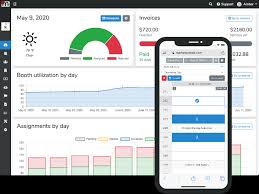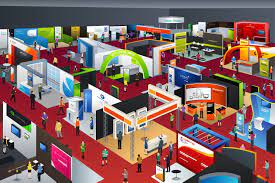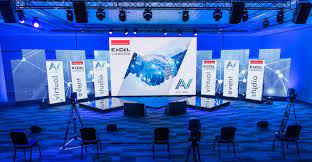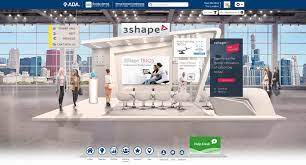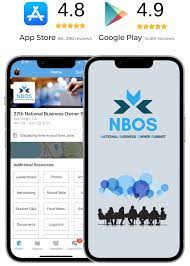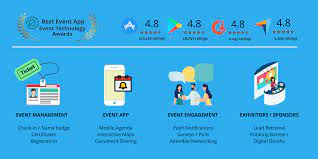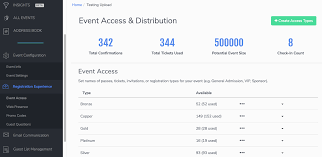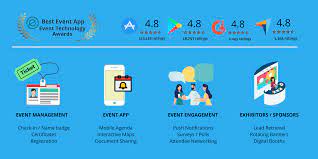Exhibits: Transforming Spaces into Engaging Experiences
Exhibits have long been an integral part of human culture, serving as platforms for education, entertainment, and exploration. From museums and galleries to trade shows and science fairs, exhibits have the power to captivate audiences and create lasting impressions.
So, what exactly makes exhibits so special? It’s the way they transform spaces into immersive environments that engage all our senses. Exhibits bring together a harmonious blend of visual displays, interactive elements, informative content, and thought-provoking experiences.
One of the key strengths of exhibits lies in their ability to convey information in a compelling manner. Instead of relying solely on text-heavy panels or presentations, exhibits utilize a variety of mediums to communicate ideas effectively. Eye-catching graphics, multimedia displays, tactile objects, and even virtual reality can be employed to enhance the visitor’s understanding and engagement.
Moreover, exhibits have the power to transport us to different worlds. They can recreate historical events or faraway places with meticulous attention to detail. Whether it’s stepping into a life-size replica of an ancient civilization or exploring the depths of the ocean through a simulated underwater environment, exhibits provide us with unique opportunities for discovery and exploration.
The interactivity offered by exhibits is another aspect that sets them apart. Visitors are encouraged to actively participate rather than passively observe. Hands-on activities, touchscreens, interactive games, and simulations allow visitors to become active learners while fostering a deeper connection with the subject matter. This level of engagement not only enhances retention but also sparks curiosity and encourages further exploration beyond the exhibit itself.
Exhibits also serve as powerful tools for storytelling. They have the ability to weave narratives that captivate audiences and evoke emotions. By presenting information in a narrative format or by showcasing personal stories and testimonials, exhibits can create meaningful connections between visitors and the subject matter.
In addition to their educational value, exhibits also play a significant role in promoting businesses and industries. Trade shows and industry-specific exhibits provide a platform for companies to showcase their products and services, connect with potential clients, and stay ahead of the competition. These exhibits serve as a hub for networking, innovation, and collaboration within various sectors.
As technology continues to advance, exhibits are evolving as well. Virtual reality, augmented reality, and interactive digital displays are becoming increasingly prevalent in modern exhibits, pushing the boundaries of what is possible. These advancements provide new avenues for creativity and engagement while offering visitors unforgettable experiences.
In conclusion, exhibits are transformative spaces that captivate our senses, educate us about the world around us, and inspire us to explore further. Whether they are found in museums, trade shows, or other venues, exhibits have the power to leave a lasting impact on individuals of all ages. So next time you step into an exhibit space, be prepared to embark on a journey of discovery and wonder.
Engaging and Interactive: Enhancing Learning Experiences
Unique Promotion: Exhibits as Innovative Marketing Tools
Connecting People: Sharing Knowledge and Experiences
4. In-depth Exploration
- They provide an engaging, interactive learning experience.
- Exhibits can help to promote a product or service in a unique way.
- They create an opportunity for people to connect with each other and share knowledge and experiences.
- Exhibits allow visitors to explore the subject matter in depth, providing them with a more detailed understanding of the topic at hand.
- Exhibits are often entertaining as well as educational, making them appealing to all ages and demographics of people who visit them.
- Exhibits can be used to inspire creativity and innovation within the community or organization that hosts them by giving visitors something new to consider and discuss.
- Exhibits can be used as a platform for fundraising events or activities, providing additional sources of revenue for organizations while also generating awareness about their cause or mission statement
Challenges of Exhibits: Cost, Time, Accessibility, Risk, Updates, and Technology
- Expensive – Exhibits can be costly to create, maintain, and transport.
- Time-consuming – Planning and organizing an exhibit can take a great deal of time.
- Limited audience – Exhibits are typically only accessible to people who visit the physical location where they are located.
- High risk of damage – Artifacts and objects in an exhibit are vulnerable to theft, vandalism, or accidental destruction from visitors or staff members handling them improperly.
- Difficult to update – Once an exhibit is created it can be difficult and expensive to make changes or updates over time as new information becomes available or trends change.
- Outdated technology – If not updated regularly, exhibits may feature outdated technology which may limit visitor engagement with the content presented in the exhibit space
They provide an engaging, interactive learning experience.
Exhibits: Providing Engaging, Interactive Learning Experiences
Exhibits have revolutionized the way we learn and engage with information. One of the standout benefits of exhibits is their ability to provide an immersive and interactive learning experience.
Gone are the days of passive learning through textbooks or lectures. Exhibits offer a hands-on approach that encourages visitors to actively participate in the learning process. Whether it’s through touchscreens, interactive displays, or engaging activities, exhibits create an environment where visitors can explore and discover information at their own pace.
By incorporating interactive elements, exhibits capture attention and stimulate curiosity. Visitors are no longer mere observers but become active learners who can touch, manipulate, and experiment with the subject matter. This level of engagement fosters a deeper understanding and retention of information.
Furthermore, interactive exhibits cater to various learning styles. Some individuals may prefer visual stimuli, while others may be more inclined towards tactile or auditory experiences. Exhibits can incorporate a combination of these elements to accommodate different preferences and ensure that every visitor has an enriching experience.
The interactivity offered by exhibits also promotes critical thinking skills. Instead of passively receiving information, visitors are encouraged to analyze, problem-solve, and make connections between different concepts. This active engagement enhances cognitive abilities and encourages visitors to think creatively and independently.
Additionally, interactive learning experiences provided by exhibits are often more memorable than traditional methods. When we actively participate in something, our brains form stronger neural connections that facilitate better recall in the future. By engaging multiple senses and creating memorable experiences, exhibits leave a lasting impression on visitors long after they have left the exhibit space.
Exhibits also have the power to break down complex subjects into digestible pieces of information. Through interactive displays or multimedia presentations, intricate concepts can be simplified and made accessible to a wide range of audiences. This inclusivity ensures that everyone can benefit from the educational value that exhibits offer.
Whether it’s exploring a science exhibit, delving into history, or discovering the wonders of nature, interactive exhibits provide a dynamic and enriching learning experience. They engage our senses, stimulate our curiosity, and encourage active participation. Exhibits have truly transformed the way we learn by making education enjoyable and accessible to all.
Exhibits: Promoting Products and Services in a Unique Way
In the competitive business landscape, standing out from the crowd is essential for success. Exhibits offer a unique opportunity to promote products and services in a way that captures attention and leaves a lasting impression on potential customers.
One of the key advantages of using exhibits as a promotional tool is their ability to create an immersive and interactive experience. Instead of relying solely on traditional marketing methods like advertisements or brochures, exhibits allow businesses to showcase their offerings in a dynamic and engaging manner. By creating an environment that stimulates multiple senses, exhibits have the power to captivate visitors and make them feel connected to the product or service being promoted.
Exhibits provide a platform for businesses to demonstrate the features, benefits, and unique selling points of their products or services. Through interactive displays, live demonstrations, or even virtual reality experiences, businesses can showcase their offerings in action. This hands-on approach allows potential customers to truly experience the value that the product or service brings, which can greatly influence their purchasing decisions.
Furthermore, exhibits offer opportunities for face-to-face interactions between businesses and potential customers. Trade shows and industry-specific exhibits attract individuals who are actively seeking information about products or services within a particular field. This targeted audience provides businesses with an ideal setting to engage in meaningful conversations, answer questions, address concerns, and build relationships. These personal interactions can foster trust and credibility while allowing businesses to gather valuable feedback directly from their target market.
Another advantage of using exhibits for promotion is their ability to create memorable experiences. When designed creatively and thoughtfully, exhibits have the power to leave a lasting impact on visitors’ minds. From innovative booth designs to captivating visuals or interactive activities, exhibits can generate buzz and word-of-mouth marketing as visitors share their positive experiences with others.
Additionally, exhibiting at trade shows or industry events provides businesses with exposure to a wider audience beyond their usual customer base. It allows them to reach potential customers who may not have been aware of their products or services otherwise. This expanded reach can lead to increased brand recognition, new leads, and ultimately, growth opportunities.
In conclusion, exhibits offer a unique and effective way to promote products and services. By creating immersive experiences, demonstrating value through interactive displays, fostering face-to-face interactions, and leaving a lasting impact on visitors’ memories, exhibits can help businesses stand out from the competition. So whether it’s at a trade show or a dedicated exhibit space, businesses can leverage the power of exhibits to showcase their offerings in a compelling and memorable way.
They create an opportunity for people to connect with each other and share knowledge and experiences.
Exhibits: Fostering Connections and Shared Experiences
One of the greatest strengths of exhibits lies in their ability to bring people together, creating opportunities for connection, knowledge sharing, and the exchange of experiences. Whether it’s a museum exhibit, a trade show, or a community event, exhibits have a unique power to foster meaningful connections among individuals.
Exhibits provide a common ground where people with shared interests can gather and engage with one another. Visitors often find themselves surrounded by like-minded individuals who are equally curious and passionate about the subject matter. This shared enthusiasm creates an atmosphere that encourages conversations, networking, and the formation of new relationships.
Within these exhibit spaces, visitors have the chance to connect with experts, professionals, and enthusiasts who can offer valuable insights and expertise. Exhibits often feature knowledgeable staff or volunteers who are eager to share their expertise and engage in meaningful discussions. This exchange of knowledge not only enriches the visitor’s experience but also promotes lifelong learning.
Moreover, exhibits serve as platforms for dialogue and the exchange of diverse perspectives. They bring together people from various backgrounds, cultures, and experiences. Through interactive displays or facilitated discussions, visitors can gain new insights into different viewpoints and broaden their understanding of the world around them.
Exhibits also create opportunities for individuals to share their own knowledge and experiences with others. Visitors may have personal stories related to the exhibit topic or possess unique expertise that can contribute to the collective learning experience. Engaging with others allows for a mutual sharing of ideas, sparking creativity and inspiring new perspectives.
In addition to connecting people on an individual level, exhibits also have a broader societal impact. They contribute to community building by bringing people together around shared interests. Exhibits often serve as catalysts for collaborations between organizations, businesses, educational institutions, and community groups. These partnerships foster innovation, drive economic growth, and strengthen social bonds within communities.
Furthermore, exhibits provide an inclusive space where everyone can participate and contribute. They are designed to accommodate people of different ages, abilities, and backgrounds. By offering accessible features and inclusive programming, exhibits ensure that everyone has the opportunity to engage, learn, and connect.
In a world that often feels disconnected and fragmented, exhibits serve as powerful reminders of our shared humanity. They create spaces where people can come together, learn from one another, and build meaningful connections. So the next time you step into an exhibit, embrace the opportunity to connect with others, share your knowledge and experiences, and embark on a journey of discovery together.
Exhibits allow visitors to explore the subject matter in depth, providing them with a more detailed understanding of the topic at hand.
Exhibits: A Gateway to In-Depth Exploration
Exhibits have a remarkable ability to transport visitors into the heart of a subject matter, enabling them to dive deep into the intricacies and nuances of a topic. Unlike other forms of information consumption, exhibits provide a unique opportunity for individuals to gain a more comprehensive and detailed understanding.
One of the key advantages of exhibits is their capacity to present information in an engaging and multi-dimensional manner. Instead of relying solely on textbooks or online articles, exhibits leverage visual displays, interactive elements, and immersive experiences to bring the subject matter to life. This dynamic approach captivates visitors’ attention and encourages them to explore further.
By offering hands-on activities, multimedia presentations, and interactive displays, exhibits actively involve visitors in the learning process. Visitors can manipulate objects, engage in simulations, and interact with digital interfaces that facilitate a deeper understanding of complex concepts. This interactivity not only enhances comprehension but also fosters curiosity and active engagement with the subject matter.
Moreover, exhibits often incorporate various types of media such as audio recordings, videos, photographs, and artifacts. These diverse mediums work together harmoniously to provide visitors with multiple perspectives on the topic being explored. By presenting information through different lenses, exhibits encourage critical thinking and enable visitors to form well-rounded opinions based on a broader range of evidence.
In addition to presenting information in an accessible manner, exhibits also create an environment conducive to focused exploration. Visitors can spend as much time as they need examining displays, reading detailed descriptions, or participating in interactive elements without feeling rushed. This freedom allows for a more thorough exploration of the subject matter at hand and facilitates a deeper level of understanding.
Exhibits also have the advantage of catering to various learning styles. Some individuals are visual learners who benefit from seeing images or diagrams that illustrate concepts clearly. Others may be tactile learners who prefer hands-on experiences that allow them to physically interact with objects related to the topic. By incorporating different modalities of learning, exhibits accommodate a wide range of learning preferences and ensure that visitors can absorb information in a way that resonates with them personally.
By providing visitors with the opportunity to explore a subject matter in depth, exhibits empower individuals to become active participants in their own learning journey. Exhibits foster a sense of curiosity, encourage critical thinking, and inspire a thirst for knowledge that extends beyond the exhibit itself. In this way, exhibits serve as gateways to deeper understanding and lifelong learning.
So, the next time you step into an exhibit space, immerse yourself in the experience and embrace the opportunity to delve into the subject matter with curiosity and enthusiasm. Let the exhibit guide you on a path of discovery and enlightenment as you uncover the intricacies of the topic at hand.
Exhibits are often entertaining as well as educational, making them appealing to all ages and demographics of people who visit them.
Exhibits: Where Education Meets Entertainment
Exhibits have a unique ability to seamlessly blend education and entertainment, making them an appealing attraction for people of all ages and demographics. Gone are the days of dull displays and monotonous presentations – exhibits today offer an immersive and engaging experience that leaves visitors both informed and entertained.
One of the key advantages of exhibits is their ability to captivate audiences through interactive elements and entertaining content. Exhibits understand that learning doesn’t have to be a chore; it can be an enjoyable experience. By incorporating games, hands-on activities, multimedia displays, and even live demonstrations, exhibits create an atmosphere that appeals to our natural curiosity and desire for entertainment.
This approach not only makes learning more enjoyable but also enhances the overall educational impact. When visitors are engaged and entertained, they are more likely to retain information and develop a deeper understanding of the subject matter. Exhibits provide an opportunity for individuals to actively participate in their own learning journey, which can lead to a more meaningful and memorable experience.
The appeal of exhibits extends beyond just children or specific interest groups. Exhibits cater to a wide range of interests, making them accessible to people from all walks of life. Whether you’re a history buff exploring an exhibit on ancient civilizations or a technology enthusiast immersing yourself in the latest innovations at a trade show, there is something for everyone.
Exhibits also offer a unique opportunity for intergenerational experiences. Families can visit exhibits together, creating shared memories while simultaneously engaging in educational activities. Grandparents can pass down their knowledge and experiences while children soak up new information – all within the same exhibit space. This intergenerational aspect fosters bonding, communication, and lifelong learning.
Furthermore, exhibits serve as social hubs where people with similar interests can connect and engage with one another. Trade shows bring together professionals from various industries who share common goals or passions. Museums provide spaces where art enthusiasts can discuss and appreciate works of art. Exhibits become a meeting point for like-minded individuals, fostering a sense of community and collaboration.
In a world saturated with digital distractions, exhibits offer a refreshing break from screens and virtual experiences. They provide an opportunity to step away from the virtual realm and engage with the physical world in a meaningful way. The tactile nature of exhibits stimulates our senses, creating an immersive experience that cannot be replicated through a screen.
In conclusion, exhibits have the power to entertain while educating, making them appealing to people of all ages and backgrounds. By combining interactive elements, engaging content, and a diverse range of subjects, exhibits create an environment that sparks curiosity, fosters learning, and leaves visitors with lasting memories. So whether you’re seeking knowledge or simply looking for an entertaining experience, exhibits are sure to captivate and inspire you.
Exhibits can be used to inspire creativity and innovation within the community or organization that hosts them by giving visitors something new to consider and discuss.
Exhibits: Igniting Creativity and Fostering Innovation
Exhibits have a remarkable ability to spark creativity and inspire innovation within the communities or organizations that host them. By presenting visitors with fresh perspectives, new ideas, and thought-provoking content, exhibits create an environment that encourages dialogue, exploration, and the generation of innovative solutions.
One of the key advantages of exhibits is their ability to introduce visitors to new concepts and alternative viewpoints. They challenge preconceived notions and expand the boundaries of what is considered possible. By presenting novel ideas, cutting-edge technologies, or unconventional approaches, exhibits push visitors to think outside the box and consider different possibilities.
Moreover, exhibits often showcase real-world examples of creativity and innovation in action. Whether it’s highlighting groundbreaking inventions, artistic masterpieces, or pioneering research projects, exhibits provide tangible evidence of what can be achieved through creative thinking. This exposure to real-life success stories can inspire visitors to pursue their own creative endeavors or approach challenges with a fresh perspective.
Exhibits also serve as catalysts for collaboration and idea exchange. When visitors engage with an exhibit that challenges their thinking or presents them with unfamiliar concepts, it often sparks conversations among peers or colleagues. These discussions can lead to the sharing of insights, brainstorming sessions, and collaborative problem-solving efforts. Exhibits become platforms for networking and knowledge-sharing within a community or organization.
Furthermore, exhibits foster a sense of curiosity and wonderment. They invite visitors to explore new subjects or delve deeper into familiar topics. This sense of exploration fuels imagination and encourages individuals to think beyond existing boundaries. By providing interactive elements or hands-on activities, exhibits actively engage visitors in the learning process while igniting their own creative potential.
In addition to inspiring individuals on a personal level, exhibits also have the power to drive innovation within organizations. Companies can leverage exhibits as platforms for showcasing their latest products or prototypes while gathering valuable feedback from visitors. This direct interaction with potential consumers or industry professionals can lead to valuable insights and ideas for improvement or future developments.
Ultimately, exhibits serve as catalysts for creativity and innovation. By offering visitors something new to consider and discuss, they stimulate curiosity, encourage exploration, and foster a culture of innovation within communities or organizations. Whether it’s through showcasing groundbreaking inventions, presenting thought-provoking content, or providing interactive experiences, exhibits have the power to inspire individuals and drive positive change. So next time you visit an exhibit, be prepared to be inspired and let your own creativity soar.
Exhibits: A Powerful Platform for Fundraising and Awareness
Exhibits have proven to be more than just spaces for education and entertainment. They have emerged as valuable platforms for fundraising events and activities, offering organizations an opportunity to generate additional sources of revenue while raising awareness about their cause or mission statement.
One of the key advantages of using exhibits as a fundraising platform is the ability to attract a diverse audience. Exhibits have a broad appeal, drawing visitors from various backgrounds and interests. This diversity opens up avenues for organizations to reach out to potential donors, sponsors, and supporters who may not have been aware of their cause otherwise.
By hosting fundraising events within exhibits, organizations can create a unique and engaging experience for attendees. Whether it’s an art exhibition, a science fair, or a cultural showcase, exhibits provide an immersive setting that captivates visitors’ attention and fosters a deeper connection with the organization’s mission.
Furthermore, exhibits offer opportunities for creative fundraising initiatives. Silent auctions, raffles, donation stations, or even specially curated merchandise related to the exhibit can all be incorporated into the event. These activities not only generate revenue but also allow attendees to contribute directly to the cause while enjoying their time at the exhibit.
In addition to financial benefits, utilizing exhibits as fundraising platforms helps raise awareness about an organization’s cause or mission statement. Exhibits often attract media attention and public interest, providing organizations with an opportunity to share their story with a wider audience. Through informative displays, interactive elements, and engaging content within the exhibit space, visitors can gain a better understanding of the organization’s goals and impact.
The synergy between fundraising events and exhibits also allows organizations to forge partnerships with sponsors or businesses that align with their cause. Sponsors may be more inclined to support an organization if they see their brand associated with an impactful exhibit that attracts significant foot traffic. This partnership not only provides financial support but also helps amplify the organization’s message and reach.
Moreover, exhibits can serve as a catalyst for community engagement. By organizing fundraising events within exhibits, organizations create a space where like-minded individuals can come together, share their passion, and connect with others who are equally invested in the cause. This sense of community fosters ongoing support and advocacy beyond the exhibit itself.
In conclusion, exhibits offer organizations a powerful platform for hosting fundraising events or activities. They provide an immersive and engaging setting that attracts diverse audiences, generates additional revenue, raises awareness about the cause or mission statement, and fosters community engagement. So next time you attend an exhibit that supports a cause you believe in, know that your presence and support contribute to making a positive impact in the world.
Expensive – Exhibits can be costly to create, maintain, and transport.
Expensive – The Costly Side of Exhibits
While exhibits offer a multitude of benefits, it’s important to acknowledge one potential drawback: the cost. Exhibits can be quite expensive to create, maintain, and transport. This financial aspect often poses a challenge for organizations and individuals looking to showcase their work or products.
Creating an exhibit involves various expenses. Designing and constructing engaging displays, acquiring high-quality materials, and incorporating interactive elements all come with a price tag. Moreover, the need for skilled professionals such as exhibit designers, fabricators, and technicians adds to the overall cost.
Once an exhibit is up and running, ongoing maintenance is necessary to ensure its longevity. Regular upkeep, repairs, and updates are essential to keep the exhibit in top-notch condition. This maintenance can require additional funds that need to be factored into the budget.
Transportation is another significant expense associated with exhibits. Whether it’s moving the exhibit from one location to another within a venue or transporting it across cities or even countries for trade shows or touring exhibits, logistics can be complex and costly. Shipping fees, insurance coverage, and specialized handling requirements all contribute to the overall transportation expenses.
For smaller organizations or individuals with limited budgets, these costs can pose a significant barrier to entry when it comes to creating exhibits. It may require careful financial planning or seeking external funding sources in order to bring their ideas to life.
However, it’s important not to overlook the potential return on investment that exhibits can offer. Despite the initial expenses involved, well-executed exhibits have the ability to attract attention from visitors, potential clients/customers, media outlets, and industry professionals. Exhibits can serve as powerful marketing tools that generate brand awareness and lead generation opportunities.
To mitigate costs associated with exhibits, organizations often seek partnerships or sponsorships from companies interested in aligning their brand with specific themes or industries related to the exhibit’s content. These collaborations can help offset some of the financial burdens while fostering mutually beneficial relationships.
Additionally, advancements in technology have opened up new possibilities for cost-effective exhibits. Virtual exhibits, online platforms, and digital displays provide alternative options that can be more budget-friendly compared to traditional physical exhibits. These digital alternatives still offer engaging and interactive experiences while eliminating some of the expenses related to physical construction and transportation.
In conclusion, it’s crucial to consider the financial implications of creating, maintaining, and transporting exhibits. While they can be expensive endeavors, exhibits also present opportunities for brand exposure, networking, and educational impact. By carefully planning budgets, exploring partnerships or sponsorships, and embracing digital alternatives when appropriate, organizations and individuals can navigate the costs associated with exhibits while still reaping their many benefits.
Time-consuming – Planning and organizing an exhibit can take a great deal of time.
One of the challenges that exhibits often present is their time-consuming nature. Planning and organizing an exhibit can be a complex and demanding process that requires careful attention to detail and ample preparation.
From conceptualizing the exhibit’s theme and objectives to securing a suitable venue, coordinating logistics, designing displays, and ensuring proper installation, every step of the process demands time and effort. It involves coordinating with various stakeholders, such as designers, suppliers, technicians, and exhibitors, which can add further complexity to the timeline.
The time-consuming nature of exhibits can be attributed to several factors. First and foremost is the need for thorough planning. Exhibits must be meticulously designed to effectively convey the intended message or showcase products or services in an engaging manner. This involves researching target audiences, understanding their preferences, and tailoring the exhibit accordingly.
Additionally, exhibits often require extensive coordination with multiple parties involved. This includes collaborating with vendors for booth construction or rental, arranging transportation for exhibits or equipment, managing schedules for setup and dismantling, and ensuring that all necessary permits are obtained.
Moreover, exhibits involve a significant amount of content development. From curating information to creating engaging visuals or interactive elements, each aspect requires careful consideration and may involve multiple iterations before achieving the desired outcome.
Despite these challenges, it’s important to recognize that the time invested in planning and organizing an exhibit is crucial for its success. Diligent preparation ensures that the exhibit meets its objectives effectively while providing visitors with a memorable experience.
To mitigate some of these time constraints, it is advisable to start planning well in advance. Setting clear timelines and milestones can help ensure that tasks are completed in a timely manner without unnecessary delays. Additionally, leveraging technology tools such as project management software or collaboration platforms can streamline communication among team members involved in the exhibit’s organization.
In conclusion, while it is true that planning and organizing an exhibit can be time-consuming, it is an essential investment towards creating a successful and impactful experience. By recognizing the challenges and implementing effective strategies, exhibitors can navigate the process efficiently, ultimately reaping the rewards of a well-executed exhibit that leaves a lasting impression on visitors.
Limited audience – Exhibits are typically only accessible to people who visit the physical location where they are located.
While exhibits offer a multitude of benefits, it is important to acknowledge one of their limitations: their limited audience reach. Unlike digital platforms or online resources that can be accessed globally, exhibits are confined to their physical locations, making them accessible only to those who visit in person.
This limitation restricts the potential audience that can engage with the exhibit’s content and experience its transformative power. Visitors must be physically present at the exhibit’s location, which may pose challenges for individuals who are unable to travel or have limited access to certain areas.
Furthermore, exhibits often have a finite duration, with set opening and closing dates. This time constraint further limits the number of people who can experience the exhibit. Those unable to visit during the designated timeframe miss out on the opportunity altogether.
However, it is worth noting that efforts are being made to address this limitation. Some exhibits now incorporate virtual components or create online versions that allow a broader audience to engage remotely. Virtual tours, interactive websites, and live-streamed events aim to extend the reach of exhibits beyond their physical boundaries.
Additionally, advancements in technology have opened up new possibilities for creating immersive digital experiences that simulate aspects of an exhibit. Virtual reality (VR) and augmented reality (AR) applications provide opportunities for individuals to explore exhibits from the comfort of their own homes.
Despite these efforts, there is still something irreplaceable about physically visiting an exhibit. The ambiance, tangible artifacts, and sensory experiences cannot be fully replicated through digital means alone. The ability to interact directly with exhibits and engage with fellow visitors adds depth and richness to the overall experience.
In conclusion, while limited audience accessibility is indeed a con of exhibits due to their physical nature and time constraints, steps are being taken to bridge this gap through virtual components and digital innovations. Balancing the unique qualities of physical presence with expanded online access can help ensure that exhibits continue to inspire and educate a wider range of individuals, regardless of their location or circumstances.
High risk of damage – Artifacts and objects in an exhibit are vulnerable to theft, vandalism, or accidental destruction from visitors or staff members handling them improperly.
High Risk of Damage: Protecting Exhibits from Potential Threats
While exhibits offer incredible opportunities for education and engagement, they are not without their challenges. One significant con that exhibition organizers must address is the high risk of damage to artifacts and objects on display. These valuable items are vulnerable to theft, vandalism, or accidental destruction caused by mishandling.
Theft and vandalism can be a constant concern for exhibits, especially those featuring valuable or historically significant artifacts. Unfortunately, there are individuals who may attempt to steal or damage these items for personal gain or out of sheer disregard for cultural heritage. To mitigate this risk, exhibit organizers employ various security measures such as surveillance systems, alarms, and security personnel to ensure the safety of the objects on display.
Accidental damage is another potential threat that exhibits face. Visitors and even staff members can inadvertently mishandle fragile artifacts or fail to follow proper guidelines for interacting with exhibits. This can result in irreparable damage to these precious items. To minimize this risk, exhibit organizers often implement protective measures such as clear signage, barriers, and trained staff members available to guide visitors on how to handle objects safely.
Preventive conservation techniques are also employed to safeguard exhibits from potential harm. Climate control systems help maintain optimal temperature and humidity levels to prevent deterioration of delicate materials. Proper lighting techniques are utilized to minimize exposure to harmful UV rays that can fade colors or degrade materials over time.
In addition, advancements in technology have provided new solutions for protecting exhibits. Some museums and galleries utilize interactive digital displays or replicas instead of displaying original artifacts in order to preserve the originals while still providing an engaging experience for visitors.
Despite the risks involved, exhibit organizers continually strive to strike a balance between accessibility and protection. They understand the importance of sharing cultural heritage with the public while ensuring its preservation for future generations.
Ultimately, mitigating the high risk of damage requires a combination of robust security measures, effective communication with visitors about handling protocols, and the implementation of preventive conservation practices. By taking these precautions, exhibit organizers can minimize the potential threats and create a safer environment for both visitors and the valuable objects on display.
While challenges exist, the rewards of sharing exhibits with the public are immeasurable. Exhibits provide invaluable opportunities for education, inspiration, and connection to our shared history and culture. By addressing the risks proactively, we can continue to enjoy the wonders of exhibits while preserving their treasures for generations to come.
Difficult to Update: The Challenge of Keeping Exhibits Current
Exhibits have the ability to educate, entertain, and engage audiences like no other medium. However, one con that exhibit designers and curators often face is the challenge of keeping exhibits up-to-date. Once an exhibit is created, it can be difficult and expensive to make changes or updates over time as new information becomes available or trends change.
In a rapidly evolving world where knowledge is constantly expanding, staying current is crucial. Scientific discoveries, historical research, and cultural shifts can render existing exhibit content outdated or incomplete. This poses a significant hurdle for exhibit creators who strive to provide accurate and relevant information to their visitors.
Updating exhibits involves more than just replacing outdated information with new facts. It requires careful consideration of how the changes will impact the overall design, flow, and messaging of the exhibit. The process often involves extensive research, collaboration with experts in the field, and thoughtful planning to ensure that any modifications align with the original intent while reflecting current knowledge.
The cost factor also comes into play when updating exhibits. Depending on the scale and complexity of the changes required, it may involve significant financial resources. From sourcing new materials and technologies to redesigning display structures or interactive elements, each update can incur expenses that need to be carefully budgeted for.
Additionally, logistical challenges may arise when trying to update exhibits within an already established space. Disrupting visitor experiences during renovations or modifications can be challenging for both visitors and exhibit organizers. Finding a balance between providing updated content while minimizing disruptions requires careful coordination and planning.
Despite these challenges, exhibit creators are finding innovative ways to address this con. Some have embraced digital technologies that allow for more flexible content updates without major physical alterations. Interactive displays powered by software can be easily modified with new information as it becomes available.
Collaboration with subject matter experts and ongoing partnerships with researchers also play a vital role in keeping exhibits current. By staying connected to the latest developments in their respective fields, exhibit curators can ensure that their content remains accurate and up-to-date.
While the difficulty of updating exhibits is a legitimate concern, it should not overshadow the value and impact that exhibits have on audiences. The knowledge, inspiration, and engagement they provide make them an essential part of our cultural landscape. By recognizing the challenges and embracing innovative solutions, exhibit creators can continue to create meaningful experiences that stand the test of time.
Outdated technology – If not updated regularly, exhibits may feature outdated technology which may limit visitor engagement with the content presented in the exhibit space
Outdated Technology: A Challenge for Exhibits
While exhibits have the power to captivate and engage visitors, one significant challenge they may face is the use of outdated technology. If not regularly updated, exhibits can fall behind in terms of technological advancements, which can limit visitor engagement and hinder the overall experience.
In today’s fast-paced digital age, technology plays a crucial role in capturing attention and facilitating interactive experiences. Visitors expect exhibits to utilize modern tools and platforms to deliver content in innovative ways. Outdated technology can result in a disconnect between the exhibit’s message and the audience’s expectations.
One of the main drawbacks of outdated technology is its impact on visitor engagement. If exhibits fail to incorporate current technological trends, visitors may feel disconnected or disinterested in the content presented. For example, if a museum exhibit relies solely on static displays without any interactive elements or multimedia components, it may struggle to capture the attention of tech-savvy visitors who are accustomed to more dynamic experiences.
Furthermore, outdated technology can limit the potential for creativity and storytelling within exhibits. Newer technologies offer exciting possibilities for immersive experiences that go beyond traditional methods. Virtual reality (VR), augmented reality (AR), touchscreens, and interactive displays have become increasingly popular tools for enhancing visitor engagement. Exhibits that lack these modern features may miss out on opportunities to create memorable moments and convey information effectively.
Another consequence of using outdated technology is the potential for technical issues or malfunctions during an exhibit. As devices age, they become more prone to glitches or failures, leading to frustrating experiences for both visitors and exhibit organizers. Technical difficulties can disrupt the flow of information, hinder interaction with displays, and ultimately undermine the impact of an exhibit.
To overcome this con of outdated technology, it is essential for exhibit organizers to prioritize regular updates and investments in new technologies. By staying abreast of emerging trends and incorporating them into their exhibits, organizers can ensure that visitors have access to engaging and relevant content.
Moreover, collaboration with technology experts or partnering with companies specializing in exhibit design and technology can provide valuable insights and assistance in keeping exhibits up to date. These collaborations can bring fresh perspectives, innovative ideas, and access to cutting-edge technologies that will enhance the overall visitor experience.
In conclusion, while exhibits offer incredible opportunities for education and engagement, outdated technology can pose a challenge. By recognizing the importance of staying current with technological advancements and investing in regular updates, exhibit organizers can ensure that their exhibits remain relevant, captivating, and capable of delivering impactful experiences to visitors.

